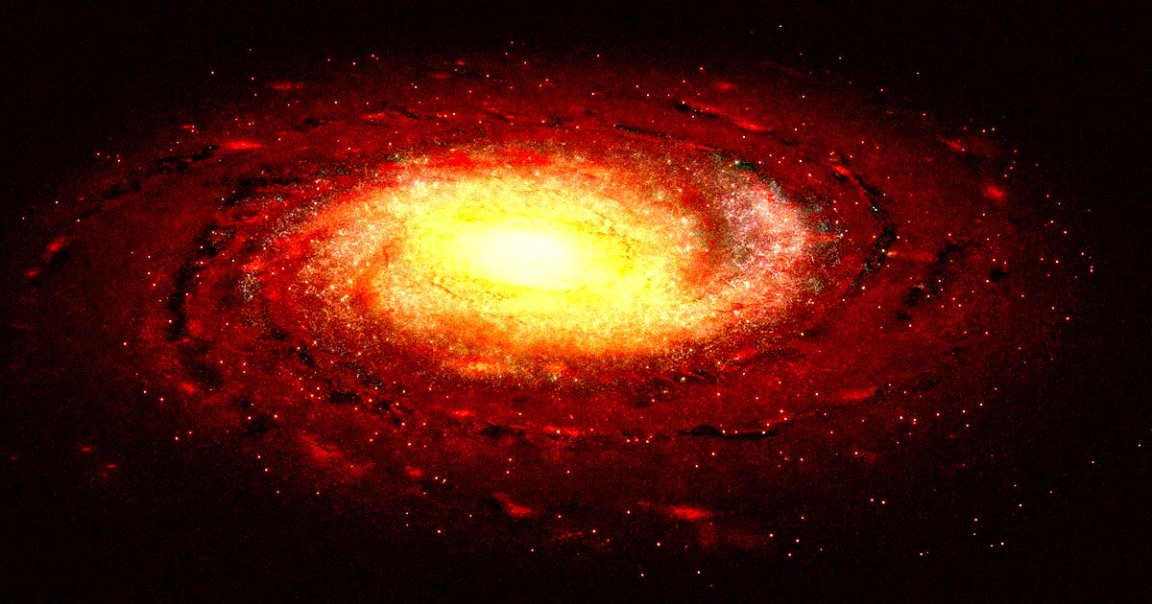
Rebel Galaxy
Astronomers peering into some of the furthest reaches of our universe have made a “baffling” discovery: the most distant rotating disc galaxy ever observed. And it closely — if not eerily — resembles our own.
The structure dubbed REBELS-25 was revealed in high detail using the Atacama Large Millimeter/submillimeter Array (ALMA), as detailed in a study accepted for publication in the journal Monthly Notices of the Royal Astronomical Society.
What really caught the researchers off guard was the galaxy’s unusually smooth and tidy structure, something that scientists have suggested takes billions of years worth of evolutionary change.
“According to our understanding of galaxy formation, we expect most early galaxies to be small and messy looking,” said coauthor and Leiden University astronomer Jacqueline Hodge in a statement.
REBELS-25 stands out as it (and its smooth resemblance to the Milky Way) dates back to when the Universe was a nascent 700 million years old, just five percent of its current age (13.7 billion years old). This is despite REBELS-25’s uncanny resemblance to the Milky Way, which is just slightly younger than the universe (at 13.6 billion years old).
In other words, we thought it took 13.6 billion years to look as smooth as us, when in fact, as REBELS-25 may indeed prove, it only takes 700 million years.
“Seeing a galaxy with such similarities to our own Milky Way, that is strongly rotation-dominated, challenges our understanding of how quickly galaxies in the early Universe evolve into the orderly galaxies of today’s cosmos,” explained first author and Leiden University doctoral student Lucie Rowland.

Spiraling Arms
Thanks to ALMA’s extremely high resolution, astronomers could make out REBELS-25’s unusually ordered structure and motion. The evidence also suggests the galaxy has spiral arms and an elongated central bar, much like the Milky Way.
“Finding further evidence of more evolved structures would be an exciting discovery, as it would be the most distant galaxy with such structures observed to date,” said Rowland.
The team is now hoping to get an even closer look, possibly with the help of NASA’s James Webb Space Telescope, which could further undermine our current understanding of how galaxies evolve over billions of years.
“In particular, ongoing ALMA observations of other REBELS galaxies will enable robust kinematic modeling of additional rotating disc candidates,” the researchers wrote in their paper.
More on ancient galaxies: Scientists Spot Giant Black Hole Destroying Galaxy